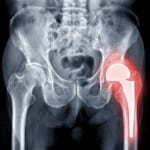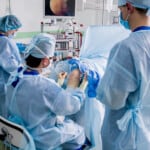Interview
Interview with Simon Hodkinson, British Orthopaedic Association President
The new President of the British Orthopaedic Association, Simon Hodkinson, discusses hopes for the orthopaedic workforce, his thoughts on research and technological developments, and advice for professionals early in their careers.
As President, what are your main hopes for the British Orthopaedic Association (BOA) and Orthopaedics in the UK over the next few years?
Every President has a theme for the year, and mine is the workforce. We need to think carefully about what is required to deliver the needs of the population with MSK pathology. This may or may not be what we have now, but we need an informed discussion, which includes all parties and must include patients.
The medically qualified workforce is not in good shape. Recruitment is good, but we do not have happy juniors and we may not have enough. We have some of the lowest orthopaedic numbers per capita and this inevitably impinges on what we can deliver and on the quality of life of those who deliver the care.
The BOA’s survey last year raised the issue of significant numbers of senior surgeons leaving the NHS in the next 5 years. If this comes to pass, we are not training sufficient new Consultants to manage the operative workload, now and in the future with the aging population with ever more fragile skeletons.
Amanda Prichard in her introduction to the NHS workforce plan said, “Without the workforce, the NHS is nothing.”
Before joining the NHS, you trained and worked for the Navy. What are the main differences you noticed between working in orthopaedics in these organisations?
There are significant differences in the way the Forces function and the NHS does. The obvious one is the size. There is no comparison between the two. However, one thought is that the Armed Forces have a much more direct approach to problems, and because individuals often have to make decisions rapidly, without referral up the chain, things get done. Sometimes endless layers of management in the NHS can lead to frustrations at ground level!
Why did you choose foot and ankle surgery as a specialty?
I trained as a general orthopaedic surgeon, as many of my generation did. But as the profession was expanding, I realised that foot and ankle surgery was an exciting subspeciality and the opportunities to treat patients in ways not previously taught began to occur. It has gone on expanding at a rate of knots and will continue to do so.
What inspired your interest in education and to take up roles such as the RCS Tutor and Training Programme Director for T&O in Wessex?
My interest in education has been lifelong, from my early days as an ATLS instructor in the 90s and flying on the helicopter at the Royal London in 1990. We are very much made in the image of our teachers, and I was lucky enough to have inspiring role models in both in the military and NHS life. I have tried to emulate them and give something back to the profession.
In your opinion, what has been the most important innovation in Orthopaedics during your time working in the field?
In my opinion, the most important innovation over my time on T&O remains joint replacement. It continues to improve and expand, but we have a long way to go. Orthopaedic surgery is not just hip and knee replacement! This will change in the coming years I am sure, but for now it remains.
Are there any recent developments or research studies in T & O you are excited about?
Research is always exciting. In my own speciality of foot and ankle surgery: to work to understand deformity in the hind foot, its development and how we manage it could well change for the better how we treat deformity. More importantly, how surgeons, with the use of advanced technology, can determine the effects of certain procedure on the deformity before and after they operate.
With areas like AI and other technological developments, in your opinion, how can we find the correct balance between innovation and managing potential risks?
AI, much talk and concerns and no doubt it will help, especially in diagnostics. The concerns remain in some cases about the validity of some of its output. It is quite capable of making it up! Vigilance on its use is the key.
However, AI gets the news, there is a lot more technology out there that will help and improve patient care. But it is going to cost! Who pays?
What would your advice be to individuals who are aspiring orthopaedic surgeons or in the early stages of their careers?
For those who want to do T&O, do it! Go into it with your eyes open, its hard work and requires dedication which is not always conducive to the perfect family life, I know from my own experience, but it is the most rewarding career and when a patient tells you, you have given them their life back its worth it.
In your piece, “Looking back and looking forward“, you spoke about changes in happiness and quality of life in orthopaedics over time. Which changes in quality of life and work-life balance have you noticed the most since entering this field? Which further changes would you like to see in the future?
There have been huge changes in work life balance over the years of my career. However, we still have a workforce that is not happy. It raises the questions why and clearly it is not just one issue.
I think for trainees, we have gone a long way to improve training and how it is delivered. But in the current climate, the pressures of the WL service delivery very easily takes priority, to the inevitable detriment of training. All too frequently, training takes second place, and we are constantly reactive to issues, not proactive.
I would like to see far more proactive thinking in healthcare with training of the next generation of the workforce at the centre not the periphery.
When you are not treating patients or serving the BOA council, what are your favourite things to do?
I am not sure I have much time in my life, which I am sure my wife and family will say speaks volumes on my work-life balance. But I do have an old car (1973 MGB), that seems to consume resources inversely proportional to its use, but it brings back fond memories of my youth.
Every President has a theme for the year, and mine is the workforce. We need to think carefully about what is required to deliver the needs of the population with MSK pathology. This may or may not be what we have now, but we need an informed discussion, which includes all parties and must include patients.

Simon Hodkinson
President of the British Orthopaedic Association




